Hi friends and welcome newcomers!
Some of you knew my mother. Others felt like you knew her because over the years I’ve shared many “Mom stories” about the colorful, competitive, athletic psychiatrist known as Sarah (and, earlier, Dr. Sally). This time, the Mom story is mostly about me. I hope it is meaningful to you, too.
In honor of what would have been Mom’s 100th birthday this week, I want to tell you about my grief: how I’ve processed my feelings in the five years since she died.
Essentially, I drew my way out — sort of like Alexander Hamilton, who “wrote his way out” of poverty, despair, and more.
For instance, here’s a drawing1:
That’s us in Mom’s nursing home. Drawing it helped me honor the intensity of our conversations during her final few days. She was ready to go, she assured me, adding, in a classic Sarah sentiment, “I’m just so sorry to miss everything else!”
People tend to turn away from death but I wanted to turn toward it, to observe it. This is what artistic expression requires: unflinching attention. Quiet concentration provides one of art’s inherent rewards.
“Oooh, I look awful!” Mom would have complained. But we have no control over “who lives, who dies, who tells your story,” as Lin-Manuel Miranda wrote in “Hamilton.” I need to tell my story my way.
Knowing she was dying, Mom had her hair and nails done.
This hand (minus the red polish) looks remarkably like my own — something I didn’t notice until I drew it.
Four hours after her death, when the mortician finally arrived at 5 am, we wrapped her body in a sheet and gently hoisted the thin corpse onto the gurney.
Just before she was wheeled down the hall toward the hearse and cold morgue, I felt a sudden need to retrieve her favorite sweater and drape it over her. Though she lived in Arizona, she had been chronically cold, and I thought she might appreciate the gesture. This drawing expresses in a somewhat comical way the irrational things people do during times of great stress and sorrow.
Artistic accidents can yield interesting ideas.
After I drew the image on the left, I turned the paper over and noticed that my alcohol-based markers had leaked through to the flip side, creating the otherworldly image on the right. This led me to wonder in what sense Mom might still be “here.”
Before and after Mom’s death, I drew hundreds of ancient goddess figurines. The one below is based on a vessel in Philadelphia’s Barnes Collection, probably from the Luba empire in Africa.
Many goddess figurines were sacred, believed to possess divine powers.
Sort of like mothers.
This drawing helps me remember the dream. I found Mom’s offer comforting — and true to her generous spirit.
Art therapy does not necessarily make a bereaved person feel better, but it does help with what researchers call meaning-making, which they define as “finding meaning in the challenging event of the loss, with new meanings forming and integrating into a system of beliefs.”
It also helps with “continuing bonds,” or “ongoing attachment to the deceased.”2
Grief hurts. Art helps.
In her poem, “Indigo,” my friend and early writing teacher Ellen Bass writes:
“This is how I bow down to my mother,
My dead mother who will never be dead.”
Dedicated to Sarah Burton Nelson and to Bernard Makowsky, my mother’s beloved second husband, who died May 20, 2024. Mom and Bernie were married when she was 70 and he was 60. Having already lost one wife to cancer, Bernie had been concerned, before their marriage, about her advanced age. She promised him ten years together. Ever the overachiever, she gave him 25.
May their memory be a blessing.
Some of these drawings are from a work in progress called Mom’s Last Swim.
Rachel E. Weiskittle and Sandra E. Gramling, “The therapeutic effectiveness of using visual art modalities with the bereaved: a systematic review,” Psychology of Research and Behavior Management, 2018; 11: 9–24. https://www.dovepress.com/the-therapeutic-effectiveness-of-using-visual-art-modalities- with-the--peer-reviewed-fulltext-article-PRBM





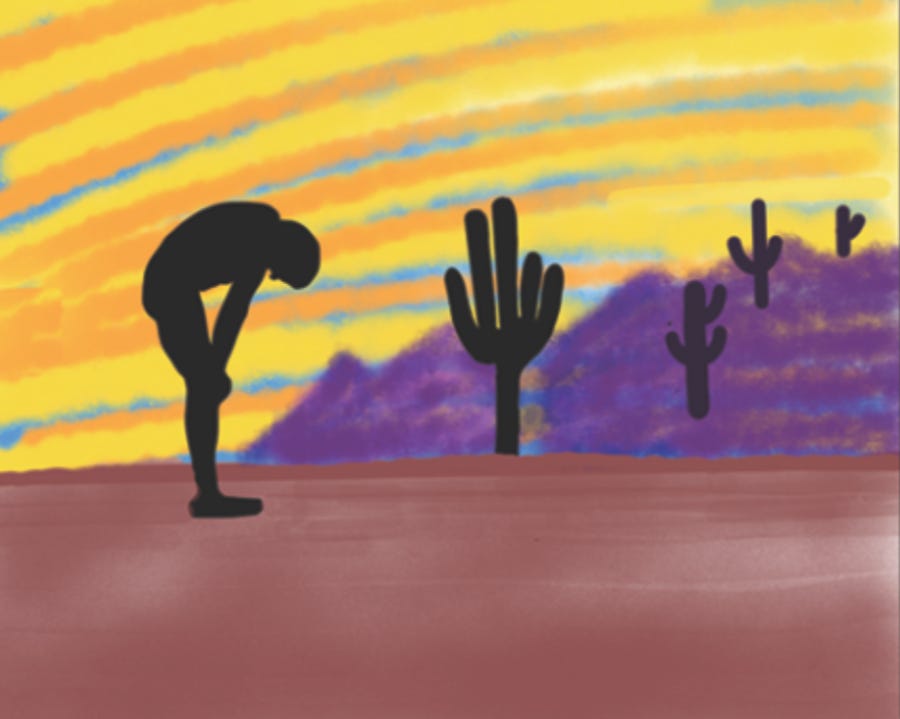
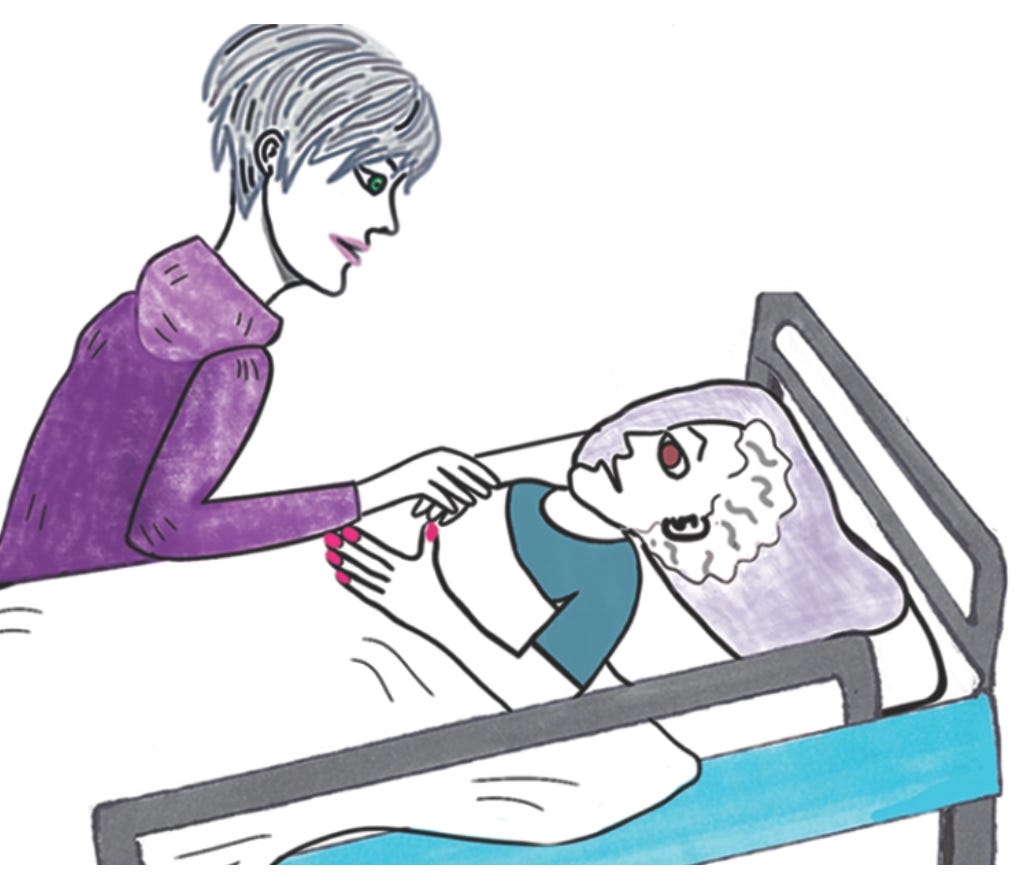
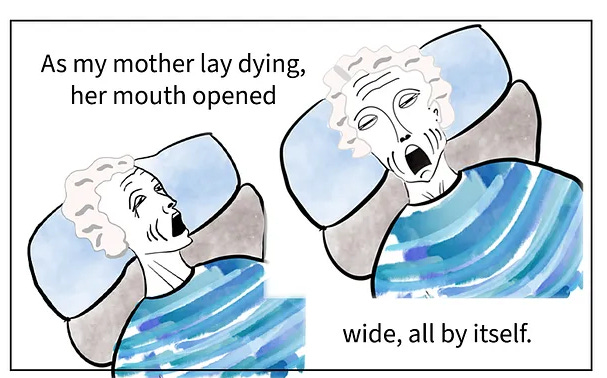


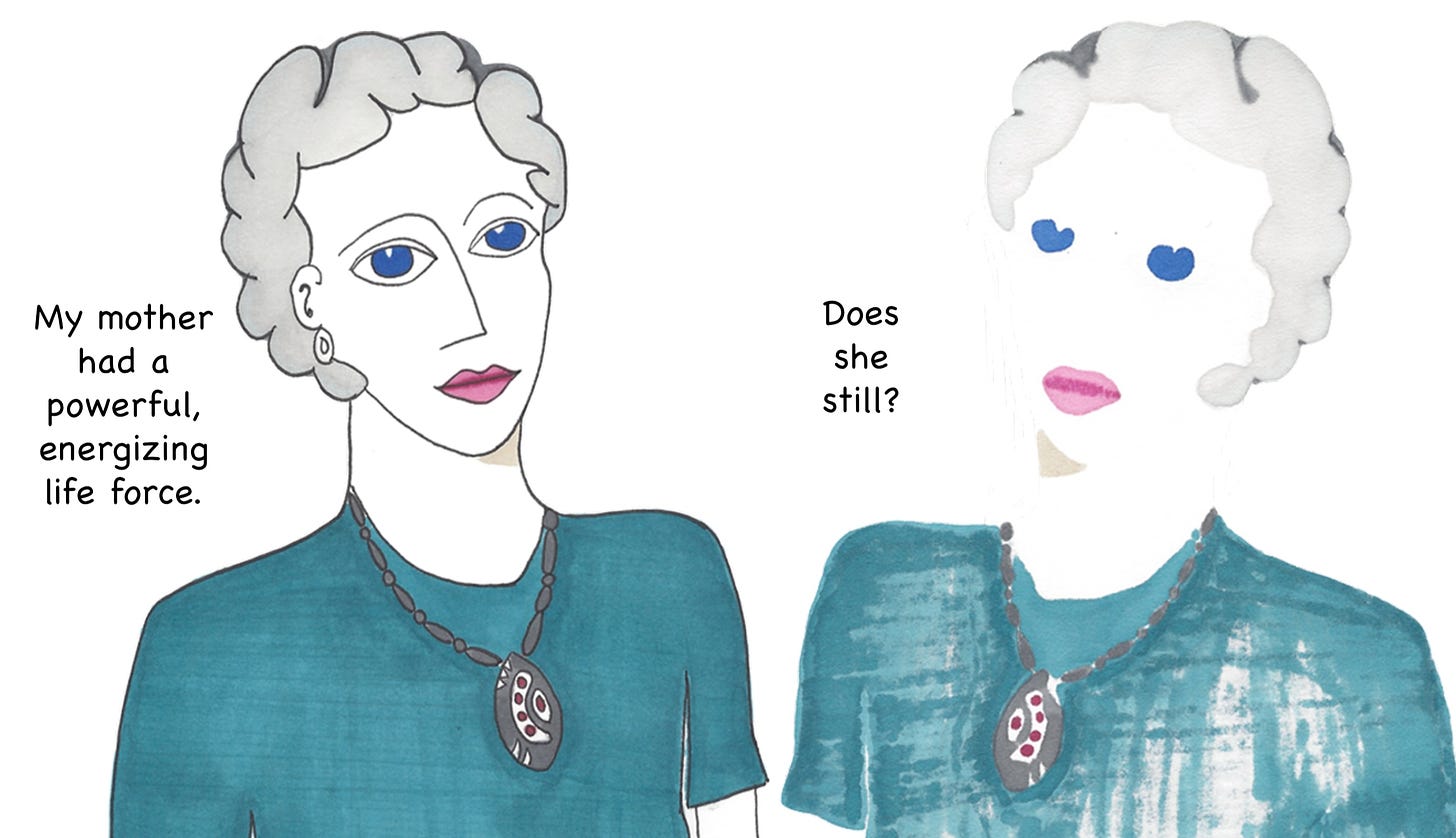
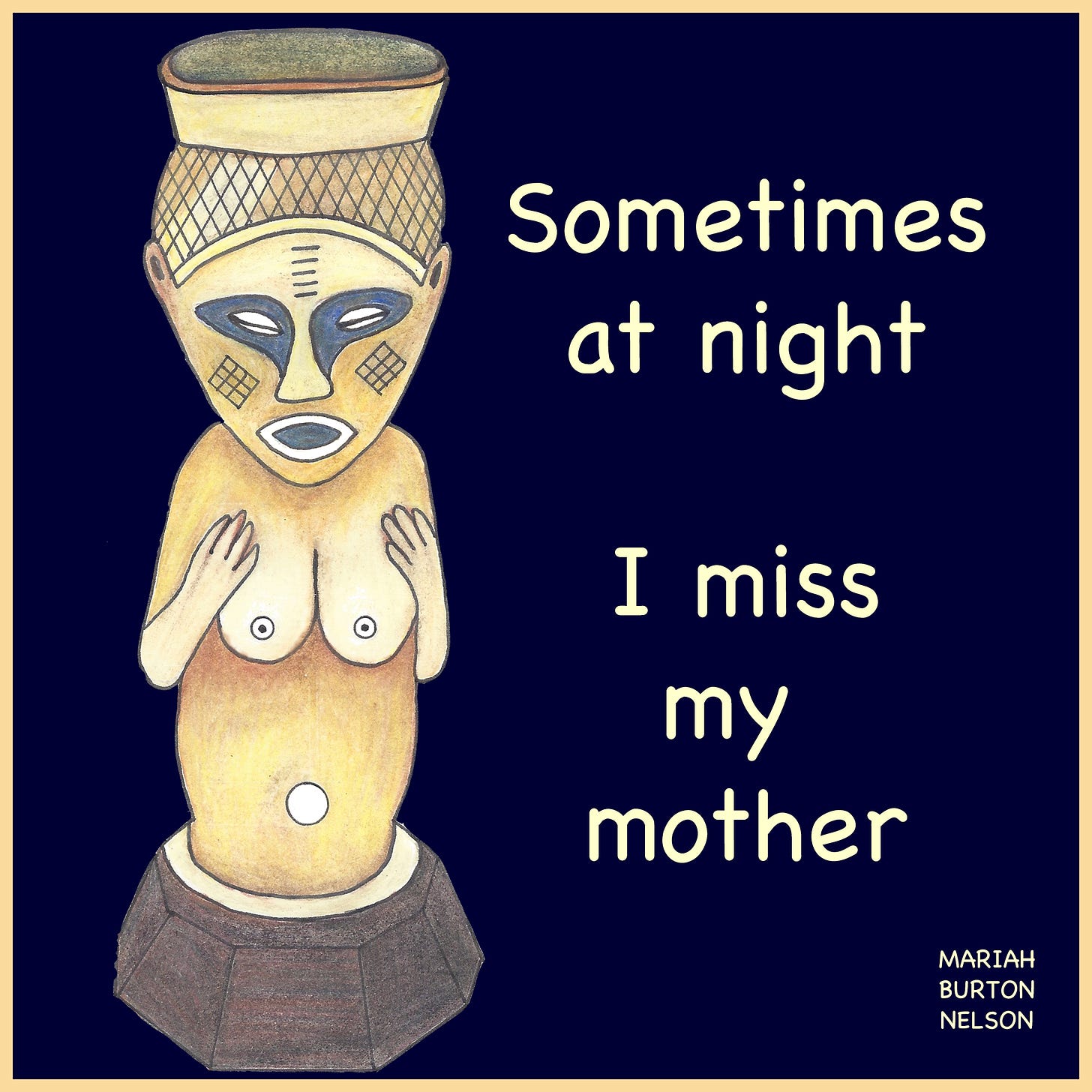
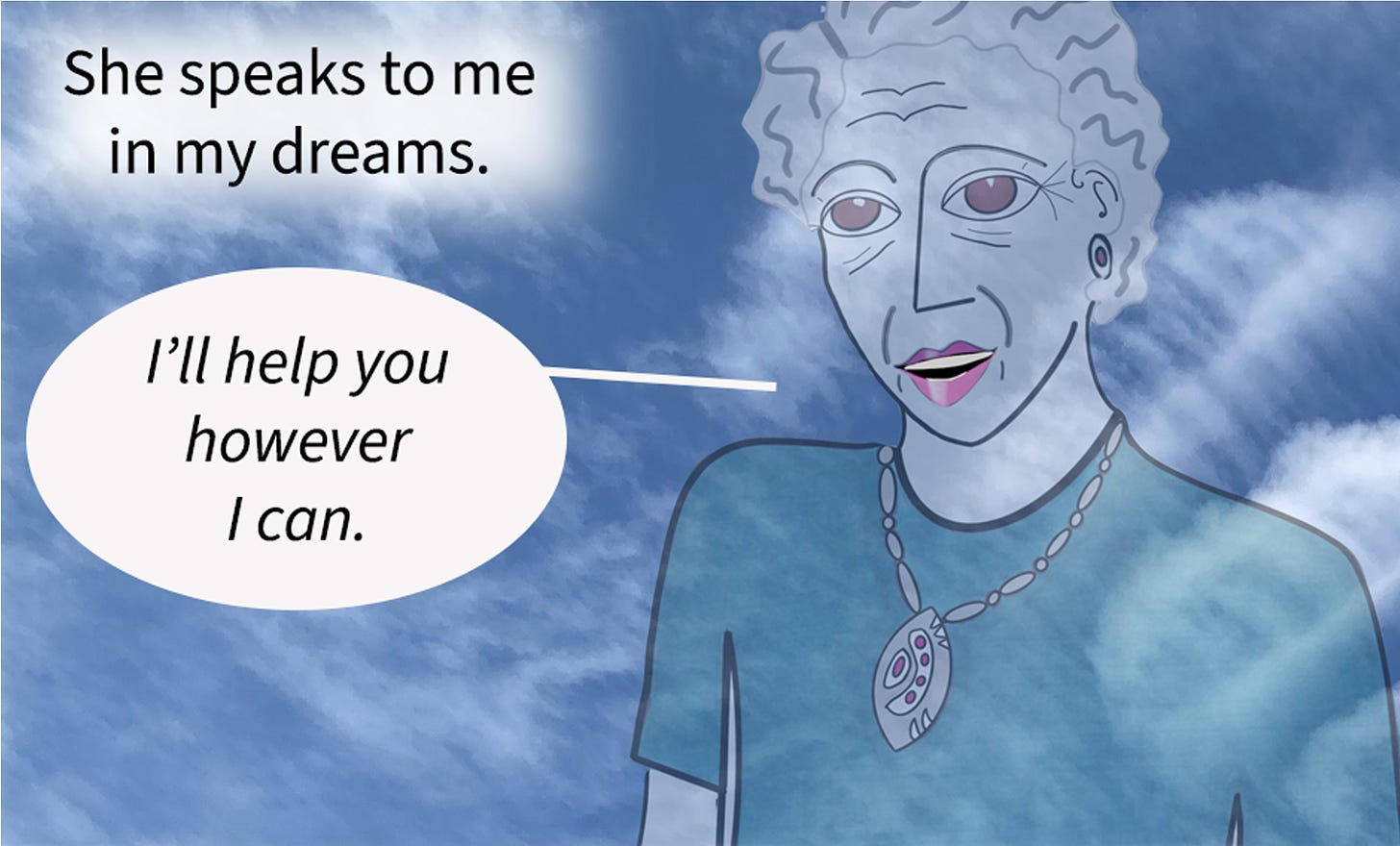
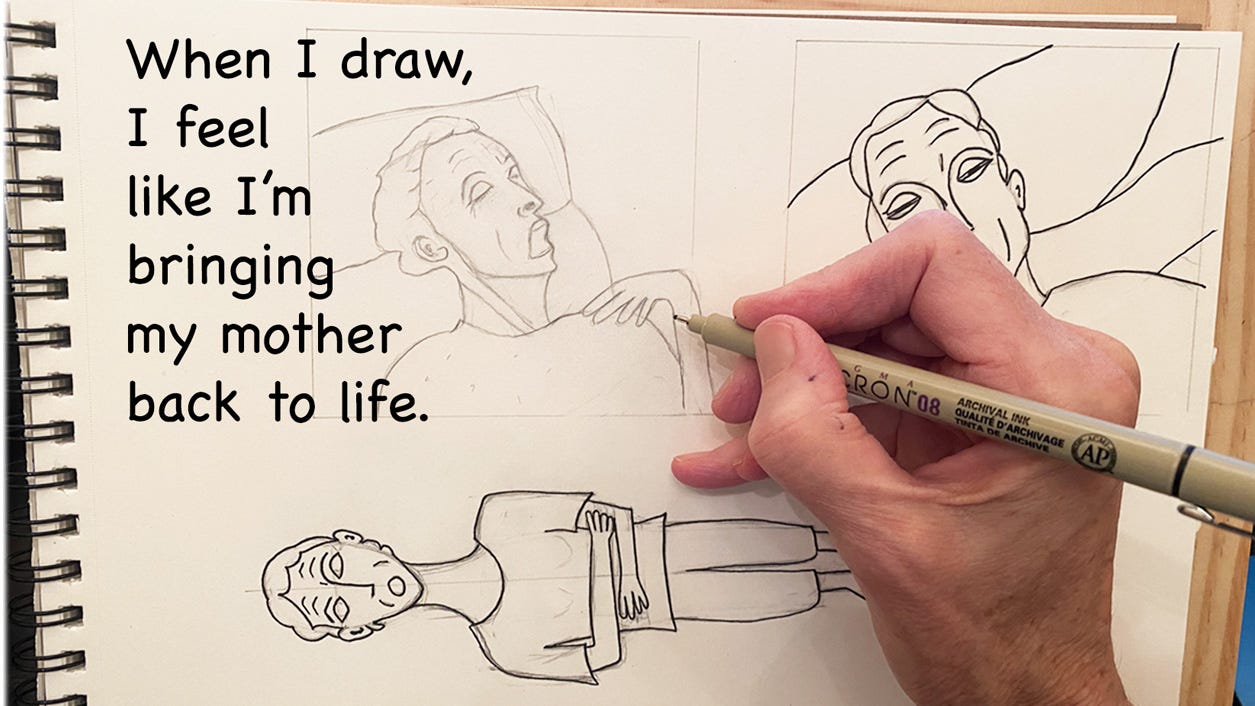

Beautiful. Like you I am finding my way out of the cave of sorrow through my art. It does not lessen the pain but it provides brief respites from the grief.
Mariah,
Thank you for sharing this exquisite love letter, which I also receive as a teaching. Deep condolences for your loss.I was a patient of your mother's when I was very young and my own mother was sick with an illness which would eventually take her life. Today, I was writing about my mother and the legacy she left me, which led me to a memory of your mother. In wanting to describe Dr. Nelson's approach/modality with accuracy, I dared to Google her. That's how I found my way here. I obviously didn't know, at least not consciously, what a powerful and embodied trailblazer she was! Wow. I feel so grateful to have received her support and wisdom on and off for ten years- she guided me through my mother's illness and eventual death. To learn about some of her uncommon and magnificent adventures now and to meet you here in this way feels like a blessing. Your mother was a light for me during a very dark decade and she was waaaay ahead of her time. Thank you for these images, your memories and inspirations. Warmly, Katherine